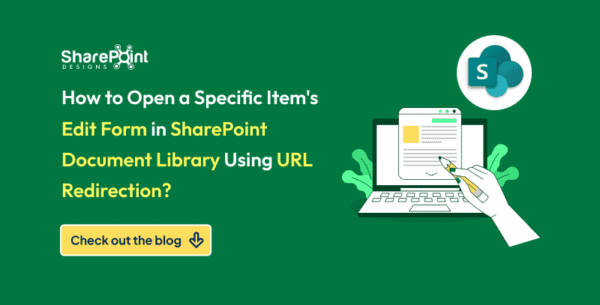The third article in the Mastering Data Management for Microsoft 365 Copilot series focuses on Exchange Online and its storage service. The aim of this series is to explain data management capabilities and best practices for key Microsoft 365 platform storage services, and to provide insight into how Microsoft 365 Copilot (Copilot) uses the data stored in these services. While this goal is well-achieved in the context of data management in SharePoint Online (SharePoint) and OneDrive for Business (OneDrive), it is somewhat overstated when discussing Exchange Online (Exchange).
Understanding the Microsoft Exchange Message Store
Microsoft Exchange Message Store (Message Store) provides storage for Exchange, along with many other Microsoft 365 services such as OneNote, Delve (retiring in December 2024), Viva Insights (formerly MyAnalytics), Teams, Bookings, and others that require a high-performance storage solution to store, manipulate, and access data related to authenticated users. Unlike SharePoint or OneDrive, which use a SQL engine for data management, the Message Store utilizes a variation of JET Blue—Extensible Storage Engine (ESE)—the same database engine used in Microsoft Exchange Server and Active Directory Domain Services.
Years ago, Microsoft opted for ESE over SQL for managing mailbox databases due to its significantly higher performance, high availability capabilities, lower storage costs, and better-suited security model. Though speculative, it’s likely that Microsoft still benefits from these ESE attributes to provide the performance and availability that users expect from Microsoft 365 services.
Structure of the Exchange Message Store: IPM and Non-IPM Subtrees
When a mail-enabled object is created in a Microsoft 365 tenant associated with a Microsoft Entra ID (Entra ID) subscription, a container is created in the Message Store. This container, known as the Root or Non-IPM (non-interpersonal messaging) subtree, represents a folder structure. One of the top-level folders in the Non-IPM subtree is called “Top of Information Store” or the IPM (interpersonal messaging) subtree. According to Microsoft documentation, the IPM subtree (1) contains folders used by email clients to send and receive messages from humans. Essentially, applications like Microsoft Outlook (Outlook) rely on the IPM subtree for email messaging, calendar, contacts, task management, and other key functions. The IPM subtree includes system-created default folders such as Inbox, Outbox, Sent Items, and Deleted Items, as well as Outlook-specific folders like Calendar, Contacts, Tasks, Notes, and more. It is also the only location where an authenticated user can create and manage custom folders.
On the other hand, the Non-IPM subtree consists of several dozen folders supporting the backend functions of Exchange and other services, as well as core Microsoft 365 features like Search, eDiscovery, and Data Loss Prevention (DLP).

How Copilot Leverages the Message Store
The Message Store is utilized by Copilot in two distinct ways. First, the content of the IPM subtree is crawled by Microsoft Search and provided to Copilot in Outlook as a data source for its supported operations. As of Wave 1 (2), Copilot in Outlook supports the following operations:
- Summarization: Extracting key points from an email thread.
- Drafting: Generating email content from prompts based on the thread context and organizational information.
- Coaching: Analyzing the user’s email drafts and suggesting improvements for tone, sentiment, and clarity.
- Meeting Invitation Creation: Automatically generating a meeting invite from within an email thread, based on the content of the messages.
On September 16, 2024, Microsoft announced Wave 2 Copilot capabilities, introducing a new operation called “Prioritize my inbox“. This feature helps users focus on their most important recent emails (3).
Copilot also uses the Non-IPM subtree to store information about user interactions with Copilot across Outlook, Word, PowerPoint, Excel, Teams, Loop, Whiteboard, and OneNote. The prompts submitted by the user during a chat, along with Copilot’s responses, are stored as messages in the “TeamsMessagesData” folder, alongside copies of other Teams chat messages. However, these messages in the TeamsMessagesData folder are only stored for eDiscovery purposes (4) and are not used by Copilot during user interactions.
Limitations of Copilot
All Copilot operations in Outlook are limited to the authenticated user’s primary mailbox (2). These features are not available for the user’s archive mailbox, group mailboxes, or shared and delegate mailboxes. This limitation prevents Copilot in Outlook from being fully utilized in high-demand scenarios like help desks or call centers, where multiple users share the same mailbox and need quick insights related to a particular case. Additionally, executive assistants cannot use Copilot to summarize or draft emails on behalf of a manager from a delegated mailbox. Copilot’s functionality is limited to the messages, calendar items, and corporate directory contacts within the user’s primary mailbox. Currently, Copilot cannot access information from tasks in To Do or the user’s personal contacts.
As we discussed in the previous post, Copilot heavily depends on Microsoft Search and can only use data indexed by the search service and available in the Semantic Index. The Semantic Index has two scopes: the user-level index, which is most likely stored in one of the application folders in the Non-IPM subtree (5), and the tenant-level index, which stores information from text-based data in SharePoint and OneDrive that is accessible by multiple users.
Summary: Key Takeaways
To summarize the main points of this article, we’ve learned that Copilot uses the Message Store in two ways. First, it accesses data from the user’s primary mailbox, indexed by Microsoft Search and stored in the user-level Semantic Index. Second, it uses the Non-IPM subtree to store information about user prompts and Copilot responses for compliance purposes. Importantly, there is no risk of data oversharing, as Copilot can only access data within the user’s mailbox and cannot expose it beyond that boundary. While Exchange administrators can be granted full access to any mailbox in the Message Store, this does not allow their Copilot to access data from these mailboxes for prompts or responses. Data in mailboxes is managed by Microsoft 365 services or by authenticated users via email clients like Outlook. It cannot be accessed or manipulated directly by users without using specialized administrative applications.
For more information about how HPE Service can help you with your Microsoft Copilot evaluation, implementation, and adoption, please read this brochure.
About the Author:

Bedrich Chaloupka
With over 30 years of experience in IT consulting and solution architecture across regional and global organizations, I specialize in leading complex digital workplace transformations. My expertise lies in helping enterprises maximize the value of their IT investments.
Currently, I serve as the Principal Information Systems Architect at HPE Services, where I am responsible for developing and launching global consulting services. These services focus on innovative solutions based on the Microsoft 365 collaboration platform.
I am passionate about exploring emerging technologies such as AI-driven solutions, which enhance productivity in day-to-day work, and the evolving cybersecurity landscape, which introduces new methods of defense and protection helping organizations to effectively respond to new threats while protecting their information and identities.
Motto: “Making cutting-edge digital workplace accessible to everyone”
Reference:
Chaloupka, B (2024). Setting up Microsoft 365 Archive. Available at: Mastering Data Management for Microsoft 365 Copilot – Part 3 | LinkedIn [Accessed: 26th September 2024].










